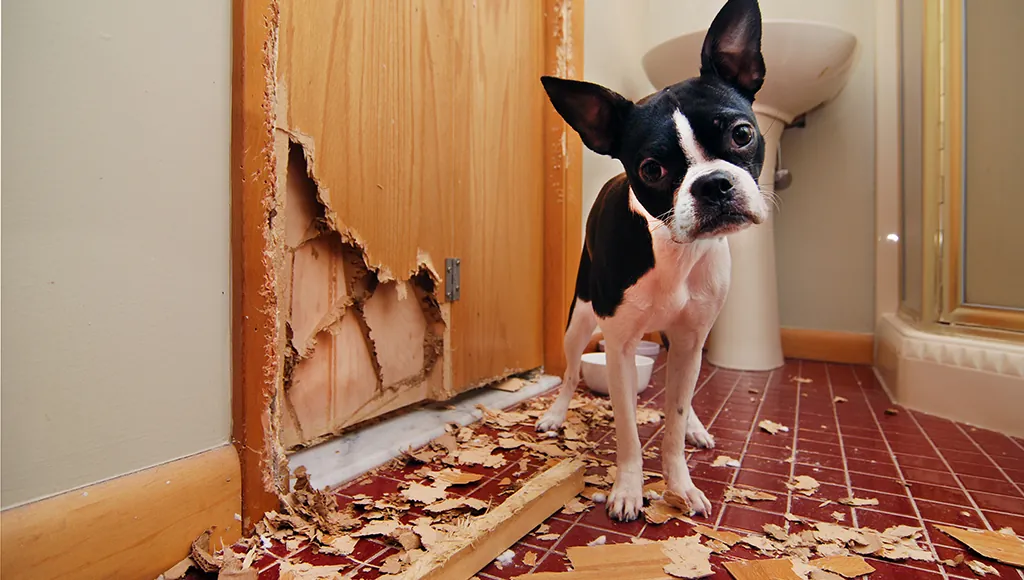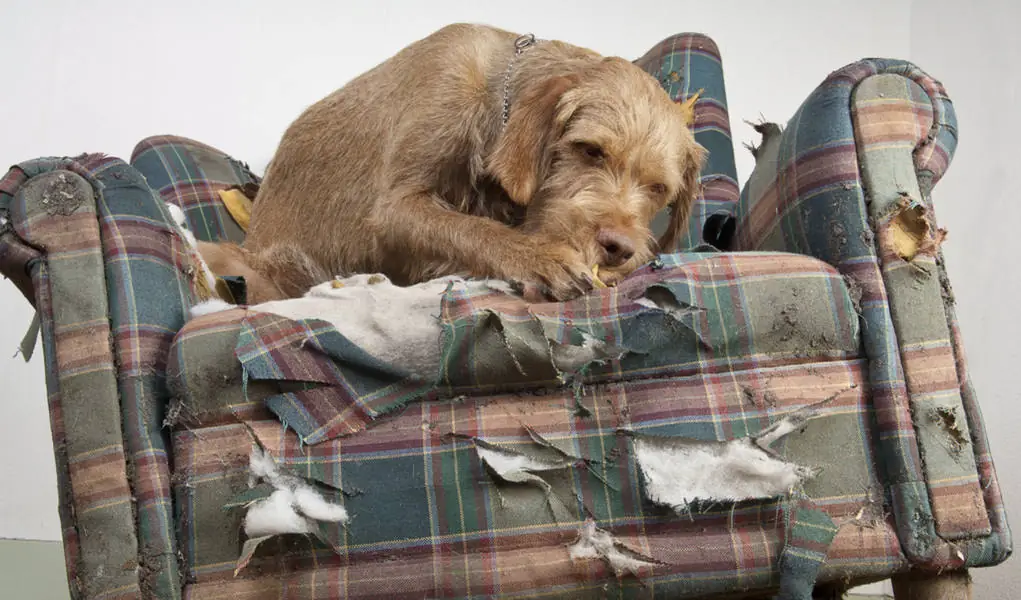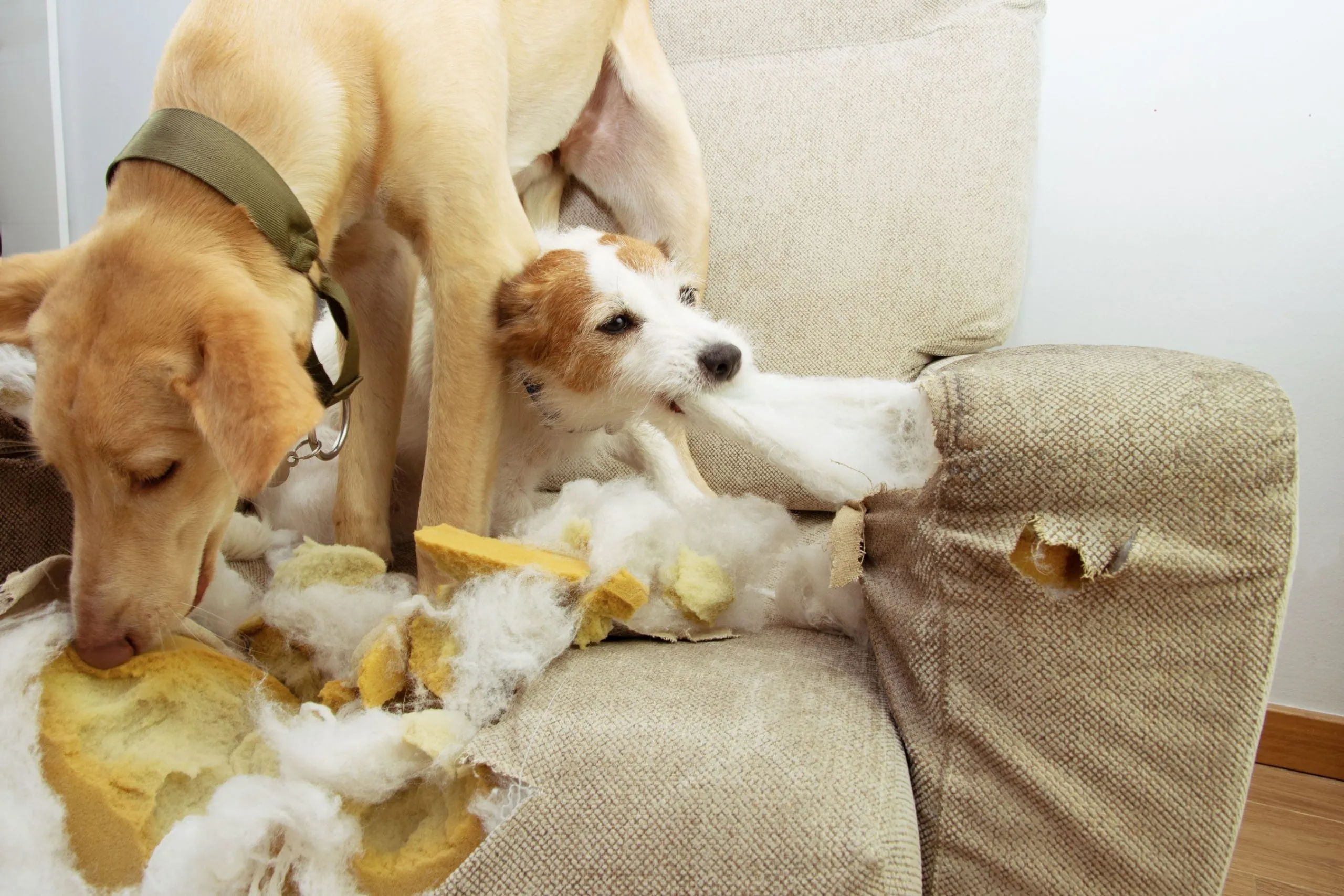No products in the cart.
Ah, the joys and challenges of being a dog owner! There’s nothing quite like coming home to a slobbery ball of fur wagging its tail, ready to shower you with unconditional love. But, as many dog parents can attest, that love can sometimes come with a side of destruction — particularly when it comes to chewing your beloved furniture. If you’ve come home to a couch with chew marks or found a wooden chair leg turned into a chew toy, you’re probably wondering how to curb this behavior. Fear not! Let’s dive into some strategies, tips, and tricks to help you keep those gnashing teeth away from your furniture.

Understanding Why Dogs Chew
Before we get into the solutions, it’s essential to understand why dogs chew in the first place. It’s completely natural behavior. Dogs chew for several reasons – boredom, teething, anxiety, or simply because it’s an enjoyable activity! Puppies, in particular, go through a teething phase where they explore the world with their mouths. Adult dogs may chew to relieve boredom or anxiety, especially if they’re left alone for extended periods.
Common Reasons Dogs Chew Furniture:
- Boredom: Dogs are intelligent creatures that need mental and physical stimulation. Without enough exercise or something to keep their minds engaged, they’ll look for their entertainment – and your furniture might just make the cut.
- Teething: Just like human babies, puppies go through teething stages, which can cause pain and discomfort. Chewing helps soothe their sore gums.
- Separation Anxiety: If your pup experiences anxiety when left alone, it may resort to destructive chewing as a way to cope.
- Curiosity: Dogs are naturally curious animals. When they encounter new textures or tastes, they might start nibbling to explore their newfound treasures.
- Attention-Seeking: Sometimes dogs chew out of sheer boredom or because they want to grab their human’s attention. Even if it’s negative attention, it’s still attention!

Time to Take Action
Now that we’ve identified some reasons behind the chewing, let’s tackle the problem! Here are practical strategies to discourage your furry friend from gnawing on your furniture while also ensuring they stay happy and entertained.
1. Provide Alternatives
One of the easiest ways to redirect your dog’s chewing habits is to provide them with appropriate alternatives. Invest in a variety of chew toys made from durable materials like rubber or ropes. Look for options specifically designed for your dog’s size and chewing strength. A good toy should keep your pup engaged without falling apart too quickly.
Recommended Chew Toys:
- KONG Classic: Stuff this with peanut butter or treats for an interactive experience.
- Nylabone DuraChew: Perfect for power chewers, these bones come in different flavors and textures.
- Rope Toys: Great for tug-of-war and chewing and can help clean your dog’s teeth.
2. Exercise and Mental Stimulation
Just like children, dogs need ample energy outlets. Make sure your dog gets enough physical exercise through daily walks, runs, or playtime at the park. If just exercising isn’t cutting it, consider adding some brain games to the mix! Puzzle toys that require your pup to manipulate items to get a reward (usually a treat) can provide hours of entertainment.
Interactive Games to Try:
- Hide and Seek: Have someone distract your dog while you hide. Once you say the command, your dog will love searching for you!
- Tug-of-War: Engaging in a game of tug can be a great way to burn off energy and bond with your pup.
- Agility Training: Create a mini-assault course in your backyard with hurdles, tunnels, and cones.
>>>Buy now: 560 Dog Years Old, 80 in Human 80th Birthday Give Idea Hoodie
3. Create a Safe Zone
If you know you’re going to be gone for a while and can’t supervise your dog, consider creating a safe zone where they can relax without risking your furniture. A crate can be an excellent tool for this (as long as it’s used positively). Ensure your dog associates the crate with safety and comfort by providing a cozy bed and some toys. When you’re absent, your pup can chill in their crate without feeling overwhelmed or bored.
4. Use Deterrent Sprays
While it may not be a one-size-fits-all solution, you can consider using non-toxic deterrent sprays designed to discourage dogs from chewing on furniture. These sprays often have a bitter taste that dogs dislike, allowing you to protect your possessions! Just be sure to follow the instructions on these products and test them on a small area before applying them to furniture.
5. Training and Reinforcement
Training your dog is crucial, and the sooner you start, the better. Use commands like “leave it” or “no” when you catch your dog in the act of chewing furniture. Reinforce positive behavior by rewarding your dog when they choose their toys over your furniture. Consistency is key! Make sure all household members follow the same rules and commands to avoid confusing your pet.
>>>Read more: Step-by-Step Guide for Training Your New Puppy
6. Increase Your Dog’s Socialization
Dogs are social creatures that thrive on interaction. If your pup is predominantly alone, consider arranging playdates or even enrolling them in doggy daycare. Having the opportunity to socialize with other dogs can alleviate boredom and anxiety, cutting down on unwanted chewing.
7. Consult a Veterinarian or Trainer
If your dog’s chewing behavior persists despite your best efforts, consider seeking professional help. A veterinarian can rule out any underlying medical issues, while a professional dog trainer can provide personalized strategies tailored to your dog’s needs.

Conclusion: Patience Is Key
Dealing with a furniture-chewing furball can be frustrating, but remember that patience and consistency are vital. By providing alternatives, exercise, mental stimulation, and proper training, you can help redirect your pup’s chewing habits and foster a more harmonious home.
Ultimately, it’s all about finding the right balance for your dog. With a bit of effort and plenty of love, you can create an environment where your furniture remains intact and your pup remains happy. Here’s to a chew-free home and a lifetime of tail wags! 🐾

